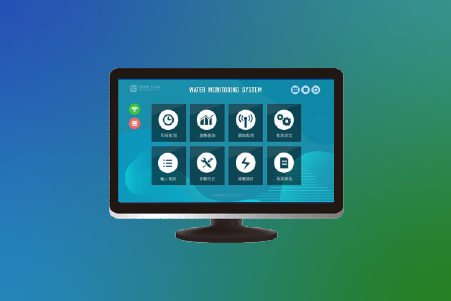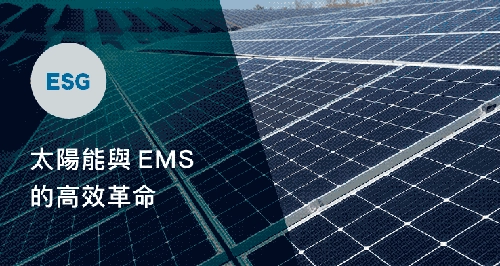Smart Agriculture 4.0 Solution
Solutions|Smart Agriculture 4.0 Solution"Toiling in the fields under the scorching sun, sweat drips onto the soil." As society faces a declining birthrate, fewer people are willing to engage in agriculture. How can we enhance agricultural value to ensure farmers' well-being, reduce labor intensity, and increase production efficiency?
Reason for Adoption
Analysis of Taiwan’s Agricultural Situation
Combining 'Smart Production' and 'IoT' to Advance Agriculture Towards Smart Development, Boosting Productivity and Efficiency.
"Toiling in the fields under the scorching sun, sweat drips onto the soil." As society faces a declining birthrate, fewer people are willing to work in agriculture. In Taiwan, most agricultural businesses are operated by part-time farmers, leading to high production costs. Additionally, due to land policies, much of the farmland has been converted for construction purposes. To address these challenges, enhancing agricultural value is essential for ensuring farmers' well-being, while automation in farming can help reduce labor demands and improve production efficiency. The government is promoting 'Smart Agriculture' in an effort to shift away from passive subsidies and actively strengthen Taiwan’s agricultural industry.

Aging Population
Super-aged society
Challenges in agricultural employment

Climate Change
Extreme weather variations
Reduced rainfall and sunlight

Labor Shortage
Many job vacancies
Declining workforce in agriculture

Limited Farmland
Small and fragmented land plots
Difficulties in systematized expansion
Core Concept
Smart Agriculture Formed by Four Key Elements

The integration of traditional agriculture with digital technology involves automation technologies such as robotic arms and autonomous mobile production lines. These automated processes simplify complex operations, reducing labor requirements and allowing users to focus more on managing and designing production workflows.
By collecting and accumulating data from sensors, users can analyze historical trends to identify differences, serving as a crucial reference for environmental improvements and production process optimization. AI-driven enhancements further simplify operations, while various IoT data sources interconnect, improving overall intelligence and efficiency.
How to Implement
GoodTech and Smart Agriculture
GoodTech offers cost-effective IoT solutions for "Smart Agriculture," utilizing simple data transmission methods and a combination of various sensing systems. This allows users to monitor crop conditions in real-time and adjust environmental factors accordingly.
By leveraging long-term monitoring trend charts, users can identify external environmental factors affecting crops and minimize adverse effects. This approach not only enhances crop quality and yield but also significantly reduces labor and time costs.

Various Sensor Modules ⮕ System Host & Monitoring Software ⮕ Cloud Database & Local Network ⮕ Mobile Devices & Remote PCs
Smart Agriculture Monitoring Solution
The Smart Agriculture Monitoring Solution integrates wireless sensors to achieve environmental monitoring. Through big data collection and analysis, it predicts potential issues and allows experts to make informed decisions. By combining monitoring with actuation, GoodTech leverages IoT technology to enhance environmental monitoring and control measures, ultimately realizing the vision of smart agriculture.

#Long-term Online Monitoring to Minimize Negative Impact
Real-time crop monitoring allows users to adjust environmental conditions proactively. By analyzing long-term data trends, users can predict and mitigate potential risks, improving crop and aquaculture quality and yield.
#Data Collection & Recording for Accurate Budget Planning
Since different crops and aquaculture operations require unique materials and care schedules, the system allows users to customize sensor projects and collect statistical data. This helps users manage budgets, plan schedules, and track growth trends efficiently.
#User-friendly Software for Instant Smartphone Access
To meet the needs of farmers and aquaculture operators, the monitoring software is designed for simplicity. Avoiding unnecessary configurations, the system enables users to check real-time data easily via mobile devices, ensuring convenience and quick decision-making.
#Flexible Deployment with Wireless Monitoring
The system accommodates various sensors depending on the field application. Users can expand monitoring points effortlessly, customize alert thresholds, and set notification methods to best suit their operational needs.
How to Implement
Smart Aquaculture with Unlimited Wireless Monitoring
Designed with affordability in mind to meet the needs of aquaculture users, this system enables widespread adoption among fish farmers. Each aquaculture zone supports wireless transmission up to approximately 1 km, with optional extenders available for longer distances, ensuring seamless connectivity without limitations.
Application Overview
Tailored Monitoring for Every Environment
Smart agriculture IoT is applied to build environmental monitoring systems for various sectors such as floriculture, agriculture, fungi cultivation, poultry farming, livestock, aquaculture, and forestry. Sensor types are selected based on crop type and environmental conditions, ensuring a customized monitoring environment for each application.



Implementation Cases
Example I (Aquaculture Water Quality Monitoring)

Implementation Cases
Example II (Poultry Farm Environment Monitoring)

Support
Other Smart Agriculture Topics









